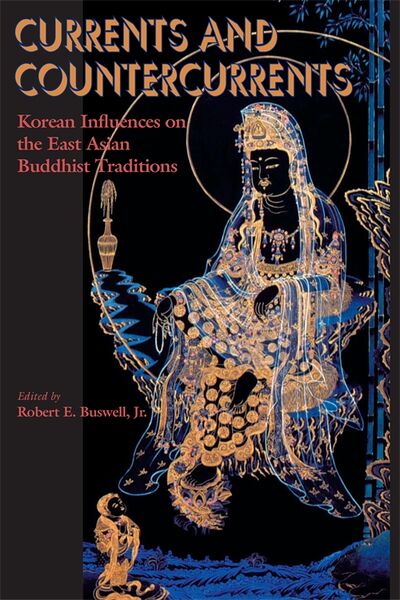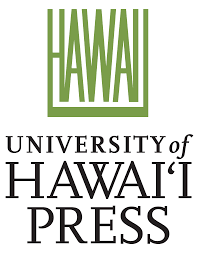- Acknowledgmentsix
- Introduction Patterns of Influence in East Asian Buddhism: The Korean Case
Robert E. Buswell, Jr.1
- CHAPTER 1 Paekche and the Incipiency of Buddhism in Japan
Jonathan W. Best15 - CHAPTER 2 Kyǒnghǔng in Shinran's Pure Land Thought
Hee-Sung Keel43 - CHAPTER 3 Korea as a Source for the Regeneration of Chinese Buddhism:
The Evidence of Ch'an and Son Literature
John Jorgensen73 - CHAPTER 4 Ch'an Master Musang: A Korean Monk in East Asian Context
Bernard Faure153 - CHAPTER 5 Wǒnch'ǔk's Place in the East Asian Buddhist Tradition
Eunsu Cho173 - CHAPTER 6 The Korean Impact on T'ien-t'ai Buddhism in China:
A Historical Analysis
Chi-wah Chan217 - CHAPTER 7 Ǔich'ǒn's Pilgrimage and the Rising Prominence of the Korean
Monastery in Hang-chou during the Sung and Yuan Periods
Chi-chiang Huang242
- About the Contributors277
- Index279
No edit summary |
No edit summary |
||
| (7 intermediate revisions by the same user not shown) | |||
| Line 6: | Line 6: | ||
|FullTextRead=No | |FullTextRead=No | ||
|BookToc=**{{i|Acknowledgments|ix}} | |BookToc=**{{i|Acknowledgments|ix}} | ||
**{{i|Introduction ''Patterns of Influence in East Asian Buddhism: The Korean Case'' Robert E. Buswell, Jr.|1}}<br><br> | **{{i|Introduction ''Patterns of Influence in East Asian Buddhism: The Korean Case''<br>Robert E. Buswell, Jr.|1}}<br><br> | ||
*{{i|CHAPTER 1 ''Paekche and the Incipiency of Buddhism in Japan''<br> Jonathan W. Best|15}} | *{{i|CHAPTER 1 ''Paekche and the Incipiency of Buddhism in Japan''<br> Jonathan W. Best|15}} | ||
*{{i|CHAPTER 2 ''Kyǒnghǔng in Shinran's Pure Land Thought''<br> Hee-Sung Keel|43}} | *{{i|CHAPTER 2 ''Kyǒnghǔng in Shinran's Pure Land Thought''<br> Hee-Sung Keel|43}} | ||
*{{i|CHAPTER 3 ''Korea as a Source for the Regeneration of Chinese Buddhism:<br> The Evidence of Ch'an and Son Literature''<br> John Jorgensen|73}} | *{{i|CHAPTER 3 ''Korea as a Source for the Regeneration of Chinese Buddhism:<br> The Evidence of Ch'an and Son Literature''<br> John Jorgensen|73}} | ||
*{{i|CHAPTER 4 ''Ch'an Master Musang: A Korean Monk in East Asian | *{{i|CHAPTER 4 ''Ch'an Master Musang: A Korean Monk in East Asian Context''<br> Bernard Faure|153}} | ||
Context''<br> Bernard Faure|153}} | *{{i|CHAPTER 5 ''Wǒnch'ǔk's Place in the East Asian Buddhist Tradition''<br> Eunsu Cho|173}} | ||
*{{i|CHAPTER 5 ''Wǒnch'ǔk's Place in the East Asian Buddhist Tradition''<br>Eunsu Cho|173}} | *{{i|CHAPTER 6 ''The Korean Impact on T'ien-t'ai Buddhism in China:<br> A Historical Analysis''<br> Chi-wah Chan|217}} | ||
*{{i|CHAPTER 6 ''The Korean Impact on T'ien-t'ai Buddhism in China: A Historical Analysis''<br>Chi-wah Chan|217}} | *{{i|CHAPTER 7 ''Ǔich'ǒn's Pilgrimage and the Rising Prominence of the Korean<br> Monastery in Hang-chou during the Sung and Yuan Periods''<br> Chi-chiang Huang|242}}<br><br> | ||
*{{i|CHAPTER 7 ''Ǔich'ǒn's Pilgrimage and the Rising Prominence of the Korean Monastery in Hang-chou during the Sung and Yuan Periods''<br>Chi-chiang Huang|242}}<br><br> | |||
**{{i|About the Contributors|277}} | **{{i|About the Contributors|277}} | ||
**{{i|Index|279}} | **{{i|Index|279}} | ||
|PublisherLogo=File:University of Hawai'i Press Logo.png | |||
|StopPersonRedirects=No | |||
|AddRelatedTab=No | |AddRelatedTab=No | ||
}} | }} | ||
Latest revision as of 20:10, 7 June 2023
Soon after the inception of Buddhism in the sixth or fifth century B.C.E., the Buddha ordered his small band of monks to wander forth for the welfare and weal of the many, a command that initiated one of the greatest missionary movements in world religious history. But this account of a monolithic missionary movement spreading outward from the Buddhist homeland of India across the Asian continent is just one part of the story. The case of East Asian Buddhism suggests another tale, one in which the dominant eastward current of diffusion creates important eddies, or countercurrents, of influence that redound back toward the center. These countercurrents have had significant, even profound, impact on neighboring traditions.
In East Asia perhaps the most important countercurrent of influence came from Korea, the focus of this volume. Chapters examine the role played by the Paekche kingdom in introducing Buddhist material culture (especially monastic architecture) to Japan and the impact of Korean scholiasts on the creation of several distinctive features that eventually came to characterize Japanese Pure Land Buddhism. The lives and intellectual importance of the monks Sungnang (fl. ca. 490) and Wonch’uk (613–696) are reassessed, bringing to light their role in the development of early intellectual schools within Chinese Buddhism. Later chapters discuss the influential teachings of the semi-legendary master Musang (684–762), the patriarch of two of the earliest schools of Ch’an; the work of a dozen or so Korean monks active in the Chinese T’ient’ai tradition; and the Huiyin monastery. Source: University of Hawai'i Press
| Citation | Buswell, Robert E., ed. Currents and Countercurrents: Korean Influences on the East Asian Buddhist Traditions. Honolulu: University of Hawaiʻi Press, 2005. |
|---|---|


